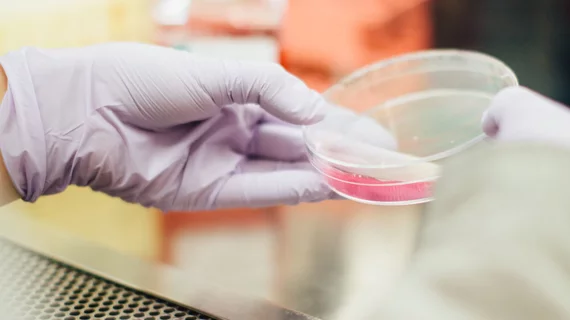Researchers have used electron microscopes and machine learning to create detailed, high-resolution 3D images of subcellular structures called organelles, which work together to keep cells alive and functioning.
The team is sharing its work in an open-source repository called OpenOrganelle, the aim being to build understanding of how organisms, including humans, work—from the cellular level and up.
The project is ongoing at the Janelia Research Campus of the Howard Hughes Medical Institute in Virginia. It’s described in a study published Oct. 6 in Nature.
Led by senior researchers Stephan Saalfeld, PhD, and Aubrey Weigel, PhD, the advance in imaging means scientists will be enabled to map the internal workings of a cell in a matter of hours.
A human performing the task manually would need 60 years, according to coverage of the development by the institution’s news division.
In an illustrated sidebar, the news item shows how AI helps map cells’ interiors in six steps:
- Using specialized electron microscopes, scientists capture thousands of images of cells, layer by layer.
- Within parts of those images, scientists painstakingly trace individual organelles by hand.
- Stacking up the traced layers creates a 3D dataset. Then scientists train machine learning algorithms on the data, teaching the computer to recognize different organelles.
- With enough example data, the computer can efficiently pick organelles out of images it’s never seen before, mapping organelle boundaries as shown here.
- Those images are compiled into a 3D dataset with each organelle identified, revealing cells’ interiors in full detail.
- Additional tools can home in on specific organelles and pinpoint the places they interact.
By opening access to the work, the team is performing an invaluable service for scientists worldwide who are studying how organelles keep cells running, Jennifer Lippincott-Schwartz, PhD, tells the internal news outlet.
She has firsthand appreciation of the access, as she’s already using the data in her research at Janelia’s new 4D cellular physiology lab.
“What we haven’t really known is how different organelles and structures are arranged relative to each other—how they’re touching and contacting each other, how much space they occupy,” Lippincott-Schwartz says.
“For the first time,” the institution reports, “those hidden relationships are visible.”
The study report’s lead author is Larissa Heinrich, a graduate student in Saalfeld’s lab.

